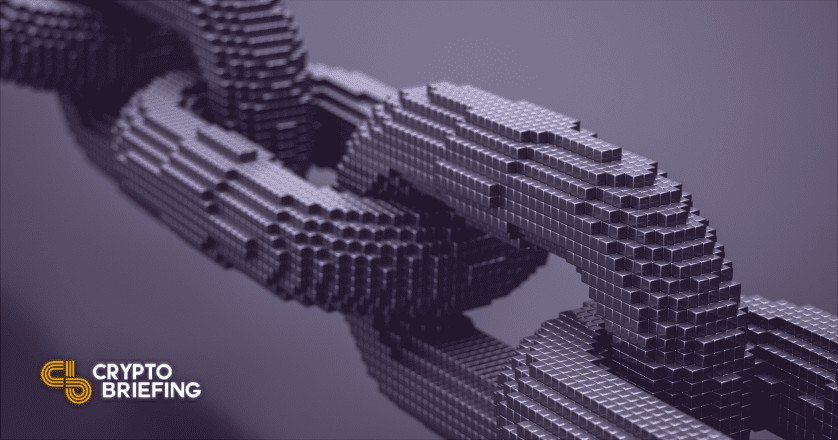Lightweight Blockchain Mina Resilient to 51% Attacks, Reports Gauntlet
A Gauntlet Network report has concluded that Mina is resistant to attacks. The analysis found that the blockchain’s scalability comes with few trade-offs.

Key Takeaways
- Mina Protocol’s scalability does not compromise on security, a report has found.
- The blockchain uses zero-knowledge proofs and a unique proof-of-stake consensus algorithm.
- Gauntlet Network assessed whether Mina’s high scalability increases the risk of a 51% attack.
Share this article
Mina blockchain is resilient to 51% attacks, according to Gauntlet Network. The research firm’s analysis looked into the blockchain’s use of zk-SNARK technology.
Analysis: Mina Scalable and Secure
The Mina blockchain is scalable and secure, a new report has found.
Gauntlet Network, a financial modeling platform for crypto and DeFi, released the protocol analysis, specifically examining its use of zk-SNARK technology.
The firm concluded that a profitable 51% attack on the protocol would be difficult to execute because any bad actor would lose more money than gain due to the token falling in value. A 51% attack is an attack on a blockchain network in which a group or individual can take over more than half of the mining hash rate.
Though more commonly associated with Proof-of-Work chains, a 51% attack is also possible with a Proof-of-Stake consensus algorithm. Gauntlet’s research said:
“Mina Protocol is actually often more expensive than normal PoS attacks. The main condition where it is cheaper requires the attacker to withstand an 80% drop in token price while still being able to execute a profitable attack.”
Mina Protocol uses zk-SNARKs, otherwise known as “Zero-Knowledge Succinct Non-Interactive Argument of Knowledge,” or zero-knowledge proofs. They use secret cryptographic keys that allow one party to show it has “knowledge” of a certain value to another party without revealing the value.
Evan Shapiro, the CEO and co-founder of Mina team O(1) Labs, explained to Crypto Briefing that the research shows that “Mina is as attack-resistant as other PoS blockchains without requiring lengthy lockups,” thanks to its use of zk-SNARKs and consensus algorithm.
Ethereum’s co-founder Vitalik Buterin helped make zk-SNARKS famous in the blockchain community, but various other chains have adopted the technology. The Mina blockchain uses zk-SNARKS to improve scalability, as they help reduce the chain size to only 22KB. Other blockchains are significantly larger: Bitcoin is over 324GB, according to Blockchain.com.
Shapiro said that data-heavy blockchains like Bitcoin and Ethereum compromise on security because the resources required to download a significant amount of data places a limit on the miners who can participate. In turn, this limits decentralization. He also said that Mina hopes to succeed by being more accessible:
“Our goal is for Mina to be scalable, secure, and highly accessible to block producers so that developers can easily use Mina to build verifiable dapps.”
By using zk-SNARKS, Mina can maintain a manageable size of only 22kb. It’s small enough to work on mobile devices.
Hyper-Scalable Web3
Scalability and security are often discussed interchangeably about blockchains, along with decentralization. Many believe that the perfect blockchain requires all three elements, though it can be difficult to achieve each to the same degree of success.
Mina uses the Ouroboros Samasika proof-of-stake consensus mechanism, similar to the Ouroboros family of algorithms. However, it improves the older Ouroboros algorithms, as validators are selected ahead of an epoch, rather than maintaining a stake for a prolonged period of time. That prevents an attacker from removing their stake and using their position to fork the chain.
“Mina improves on the Ouroboros family by allowing for the property of succinctness, while still accounting for preventing attacker attempts at long-chain forks,” Shapiro said.
The Mina blockchain is the world’s lightest. It’s part of a growing number of chains leveraging advanced cryptographic technologies like zk-SNARKS to create what’s been dubbed “Web3”—a decentralized iteration of the Internet, where blockchains like Mina act as the settlement layer for the exchange of value across decentralized apps.
Its mainnet launch is “quickly approaching,” Shapiro confirmed.
Disclosure: At the time of writing, the author of this feature held ETH, among a number of other cryptocurrencies.
